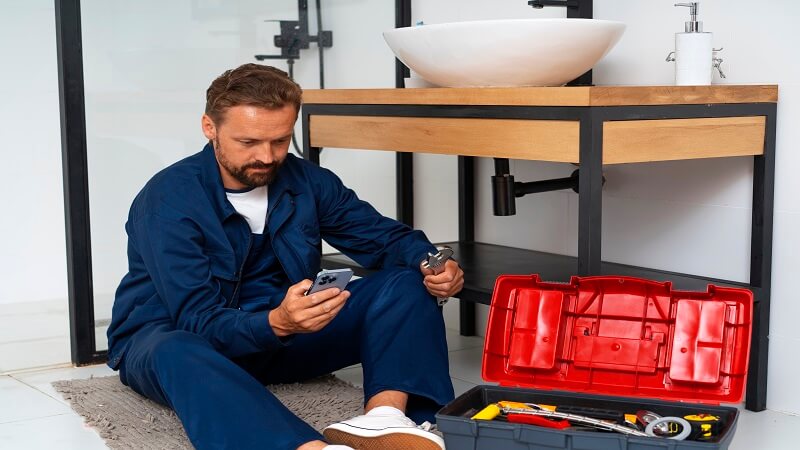Understanding the basics of your home’s plumbing system is not just about fixing a leaky faucet or unclogging a drain—it’s about grasping the essentials of a complex network that ensures comfort and hygiene in your home. This article, “Plumbing Fundamentals: Navigating the Maze of Pipes in Your Home,” offers a comprehensive guide to the ins and outs of residential plumbing, providing you with the knowledge to handle common issues and communicate effectively with professionals.
The Heart of the Matter – Water Supply and Drainage
Before delving into the intricacies of pipes and fixtures, it’s crucial to understand the two main components of any plumbing system: the water supply and drainage systems.
Understanding Your Water Supply
The water supply system is your home’s lifeline, delivering fresh water to your taps, showers, and appliances. It operates under pressure, allowing water to travel upstairs, around corners, and anywhere it’s needed.
Fun fact: The pressure that moves water through your pipes is strong enough to lift a small car!
The Downward Spiral: Drainage Systems
On the flip side, the drainage system doesn’t rely on pressure but rather gravity to guide wastewater from your home into the sewer or a septic tank. This system includes not just pipes but also vents and traps, each playing a crucial role in maintaining a healthy and odor-free environment.
Piping Hot – A Closer Look at Pipes and Materials
Pipes are the arteries and veins of your plumbing system. Over the years, materials have evolved from lead and cast iron to more modern and safe options.
The Evolution of Piping Materials
In the past, lead and cast iron were common, but due to health and durability concerns, most homes now use copper, PVC (polyvinyl chloride), or PEX (cross-linked polyethylene). Each material has its advantages and ideal uses, significantly impacting water quality and system longevity. For more details on modern plumbing materials, visit https://blairsupplyusa.com/ website.
Choosing the Right Pipe
Selecting the right pipe for a job depends on its purpose (supply or drainage), location, and the water’s temperature and pressure. For instance, PEX is great for supply lines due to its flexibility and resistance to temperature changes.
Fixtures and Fittings – The Interface of Comfort
Fixtures are the most interacted-with part of your plumbing system, from sinks and toilets to showers and bidets.
The Role of Fixtures
Fixtures are the endpoints where water is used or drained in your home. They are designed for specific tasks and often come with features to conserve water or provide comfort, like low-flow toilets and thermostatic shower valves.
Fittings and Valves: Control at Your Fingertips
Fittings and valves are essential for controlling the flow of water and connecting different pipe sections. Understanding how to shut off water to a fixture or your entire house can be a lifesaver during a plumbing emergency.
Pressure and Prevention – Keeping Things Flowing Smoothly
Maintaining the right water pressure and preventing issues like backflow are vital for a healthy plumbing system.
The Pressure Balance
Too much pressure can lead to leaks and damage, while too little can make showers and faucets less effective. Homeowners should monitor their pressure and install regulators if necessary.
Backflow Be Gone
Backflow prevention devices are crucial in keeping your drinking water safe from contamination. They stop wastewater from flowing back into your fresh water supply, a must-have in any home.
DIY Plumbing: Tips and Tricks
While some plumbing jobs are best left to the professionals, knowing a few DIY tips can save you time and money.
The Do’s and Don’ts of Home Plumbing
Always know where your main water shut-off valve is located. Don’t ignore small leaks—they can lead to bigger problems. And never, ever use chemical drain cleaners on a complete blockage: they can damage your pipes and make the problem worse.
The Phantom Flush
Did you know a “phantom flush”—when your toilet seems to flush itself—can waste up to 200 gallons of water a day? It’s usually caused by a faulty flapper in the tank, a simple fix that can save water and money.
When to Call a Pro
Recognizing when a job is beyond your DIY skills is crucial. Major installations, renovations, and serious blockages often require a professional’s touch. For more specialized help, contact risk free serv.
Signs You Need a Plumber
Persistent leaks, low water pressure, and any changes in water quality (like color or smell) are signs it’s time to call in a pro. They have the tools and expertise to diagnose and fix the issue quickly and efficiently.
Building a Relationship with Your Plumber
Having a go-to plumber can make emergencies less stressful. Look for someone reputable and experienced, and don’t be afraid to ask questions or for references.
Understanding your home’s plumbing system is about more than just pipes and fixtures; it’s about ensuring a safe, comfortable, and efficient living environment. Whether you’re tackling a DIY repair or calling in a professional, the knowledge you’ve gained from this crash course will help you navigate the complex network of plumbing in your home with confidence and ease. So the next time you face a drip, leak, or clog, remember: you’re not just a homeowner—you’re a savvy guardian of your personal oasis.
